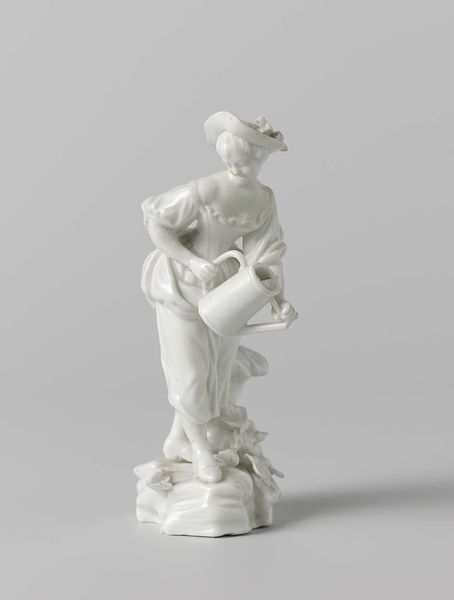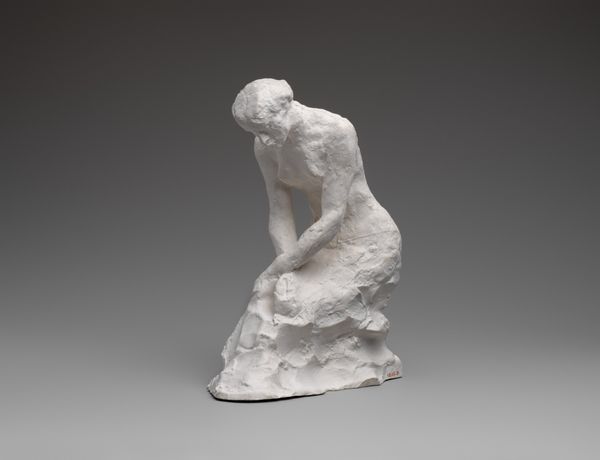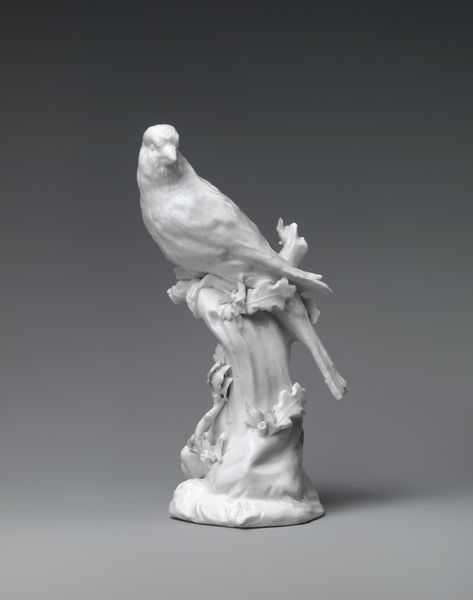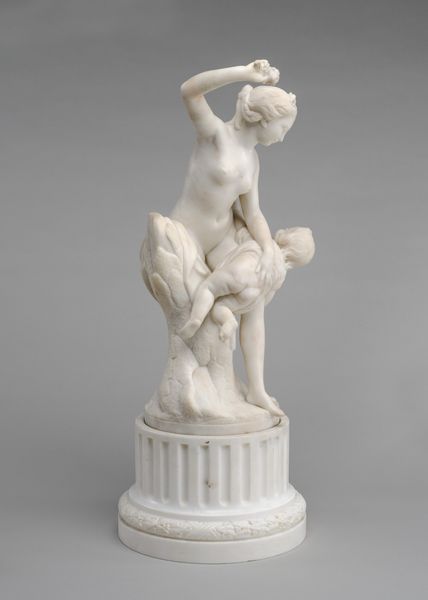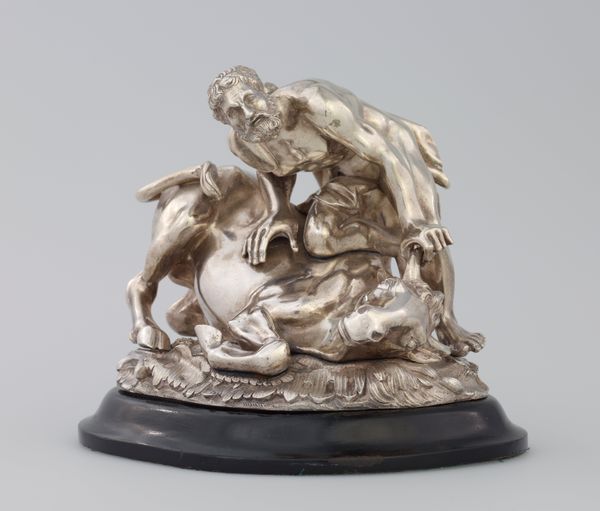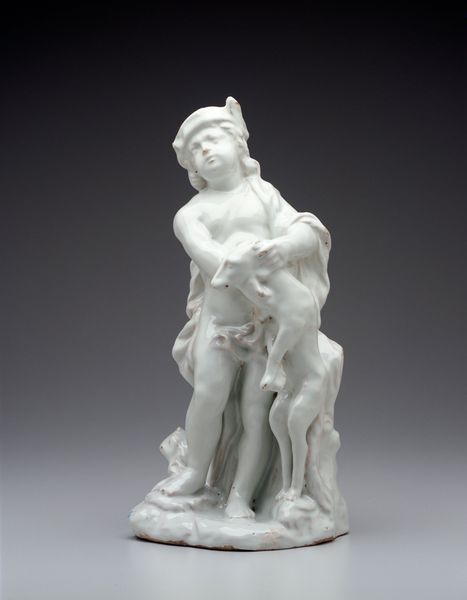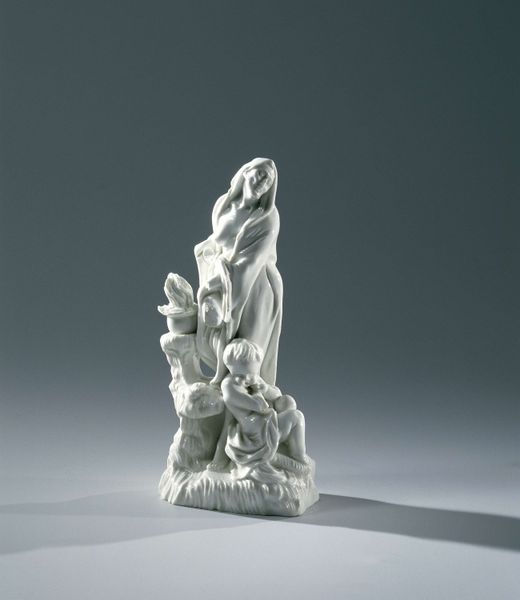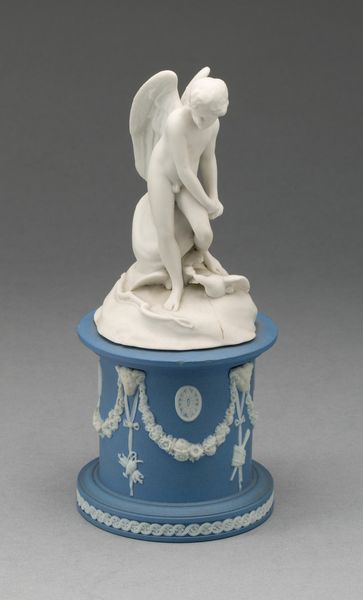
ceramic, porcelain, sculpture
#
sculpture
#
ceramic
#
porcelain
#
sculptural image
#
figuration
#
sculpture
#
mythology
#
academic-art
#
decorative-art
#
rococo
Dimensions: Height (to broken fragment of sockety): 7 in. (17.8 cm)
Copyright: Public Domain
Editor: This porcelain sculpture, "Europa and the Bull," was created by Saint James's Factory between 1744 and 1764. The smoothness of the porcelain gives it a dreamy quality, but it feels very delicate, almost fragile. What can you tell me about it? Curator: The creation of this piece lies deeply in material conditions. Soft-paste porcelain, like this, was very difficult to fire successfully at this time. The high failure rate made each surviving piece valuable and a testament to the skill, and luck, of the makers. Editor: So, its value comes from more than just the aesthetic representation of mythology? Curator: Precisely. This wasn't just high art. The workers in the factory, who prepared the clay, shaped it, and fired it, engaged in intense physical labor, driven by demand for luxury goods among the elite. The whiteness of the porcelain, achieved through careful manipulation of materials and firing processes, was highly prized and suggestive of status. The decoration too, probably undertaken by different workers, further elevated the object's commodity value. Does knowing this change your view? Editor: It definitely shifts my perspective. I was focusing on the narrative, the art-historical context. I was unaware of how the socio-economic aspects during that time play into the value and how it was produced, impacting its very existence today. So this isn't just an artwork; it's a product of labor, resources, and consumerism. Curator: Exactly. And remember, the Rococo style itself reflects an aristocratic taste for the opulent, driven by a consumer culture emerging at the time. These delicate porcelain sculptures, depicting mythological scenes, represent a significant link between labor, class and materiality. Editor: That gives me a completely different framework to see it. I really appreciate that alternative viewpoint! Curator: My pleasure, considering material conditions of artmaking allows us to grasp the nuances of class, labor, and value that are interwoven into such art object, shaping its meaning for us today.
Comments
No comments
Be the first to comment and join the conversation on the ultimate creative platform.
